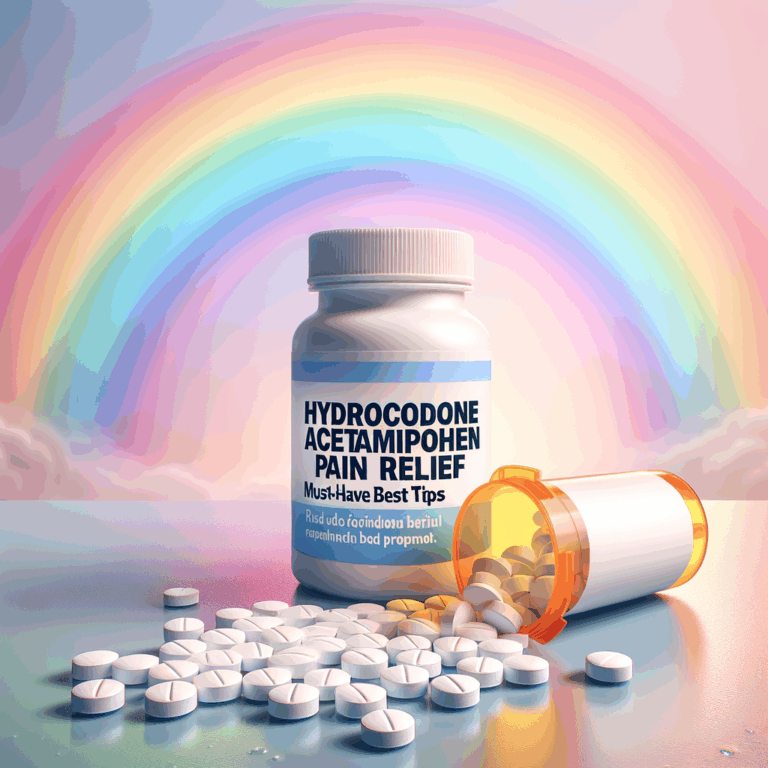
Introduction
Managing type 2 diabetes often requires medication plus lifestyle changes. Sitagliptin Metformin Combination provides a practical option for many patients. It combines two drugs with complementary actions. Consequently, it targets blood sugar in different ways for better control.
This article explains how the combination works, who benefits, dosing, safety, and practical tips. You will get clear guidance to discuss with your healthcare provider. Also, you will find answers to common questions not covered in the main text.
H2: What Is Sitagliptin Metformin Combination?
Sitagliptin Metformin Combination pairs two oral agents. Sitagliptin belongs to the DPP-4 inhibitor class. Metformin belongs to the biguanide class.
Sitagliptin increases incretin hormones to boost insulin when needed. Metformin reduces liver glucose output and improves insulin sensitivity. Together, they produce stronger glucose-lowering effects. Doctors often prescribe this combination to simplify therapy and improve adherence.
H2: How the Combination Works
H3: Mechanisms of Action
Sitagliptin inhibits the DPP-4 enzyme. This increases GLP-1 and GIP levels. As a result, the pancreas releases more insulin after meals. It also reduces glucagon release, lowering blood sugar.
Metformin decreases hepatic gluconeogenesis. It also improves peripheral glucose uptake. Thus, it reduces fasting glucose and insulin resistance. The two drugs act at different steps of glucose regulation. Therefore, they exert an additive effect without overlapping toxicity.
H3: Synergy and Clinical Impact
Combining sitagliptin with metformin addresses both fasting and post-meal hyperglycemia. Consequently, patients often achieve better HbA1c reductions. Clinical trials show significant improvement over metformin alone. Moreover, the combination has a neutral effect on weight for most patients.
Because the drugs carry low hypoglycemia risk, many clinicians prefer this pair. Also, fixed-dose combination tablets improve convenience. Many patients take fewer pills, which boosts adherence.
H2: Who Should Consider This Combination?
H3: Candidate Profiles
Patients with type 2 diabetes who do not reach goals on metformin alone may benefit. Newly diagnosed adults with moderately elevated HbA1c can also start combination therapy. People who prefer oral therapy over injections often choose this option.
Sitagliptin Metformin Combination suits patients at low hypoglycemia risk. It suits those who need weight-neutral medications. However, patients with severe kidney impairment need careful evaluation. Pregnant or breastfeeding women should avoid sitagliptin unless advised by a specialist.
H3: Contraindications and Cautions
You must not use metformin in advanced kidney disease. Also, avoid it in unstable heart failure or severe liver disease. Sitagliptin requires dose adjustments in renal impairment. Clinicians must check baseline labs before starting therapy.
In addition, watch for rare but serious side effects. Pancreatitis has occurred in some patients on DPP-4 inhibitors. If patients develop severe abdominal pain, they must stop the drug and seek care. Always weigh risks versus benefits, especially in complex medical histories.
H2: Dosing and Administration
H3: Typical Dosing Strategies
Dosing depends on renal function and prior therapy. Common fixed-dose tablets combine 50 mg sitagliptin with various metformin strengths. For example, combinations often include 500 mg, 850 mg, or 1000 mg of metformin.
Physicians usually start with metformin monotherapy. If glucose remains uncontrolled, clinicians add sitagliptin. Alternatively, doctors may start both drugs together in select patients with higher HbA1c.
H3: Dose Adjustments in Kidney Disease
Renal function dictates sitagliptin dosing. For eGFR ≥ 45 mL/min, full sitagliptin dose is acceptable. For eGFR 30–44 mL/min, reduce sitagliptin dosage. For eGFR <30 mL/min, avoid sitagliptin or use extreme caution.
Metformin also requires renal monitoring. Most guidelines advise stopping metformin if eGFR falls below 30 mL/min. Always calculate eGFR and adjust doses accordingly.
H2: Benefits of Sitagliptin Metformin Combination
H3: Improved Glycemic Control
Clinical trials show clear HbA1c reductions with the combination. Patients often see improved fasting and postprandial glucose levels. Consequently, many achieve target HbA1c faster than with metformin alone.
Because sitagliptin works only when glucose is high, hypoglycemia risk stays low. Metformin also has minimal hypoglycemia risk. Therefore, the combination is safer in that regard than many alternatives.
H3: Weight and Tolerability
Unlike some diabetes drugs, this combination usually remains weight neutral. Some patients gain no weight, while others lose modest amounts when combined with lifestyle changes. Additionally, sitagliptin generally causes few gastrointestinal side effects.
Metformin may cause GI upset initially, but slow titration and taking the pill with meals help. Fixed-dose combination pills may further improve tolerance due to streamlined dosing.
H2: Side Effects and Risks
H3: Common Side Effects
Common side effects include gastrointestinal upset from metformin. These symptoms include diarrhea, nausea, and abdominal discomfort. Taking metformin with food reduces these effects.
Sitagliptin’s common complaints include nasopharyngitis and headache. Most of these effects remain mild and transient. Table 1 summarizes common side effects and approximate frequency.
Table 1 — Common Side Effects
– Metformin: Diarrhea, nausea, abdominal pain, metallic taste
– Sitagliptin: Upper respiratory tract infection, headache, joint pain
– Combination: Low overall hypoglycemia risk unless combined with insulin or sulfonylureas
H3: Serious but Rare Risks
Metformin can cause lactic acidosis rarely. This risk increases with renal impairment, dehydration, or severe illness. Hence, clinicians stop metformin during acute hospitalization for serious conditions.
Sitagliptin has been linked to rare cases of pancreatitis. Furthermore, some patients report severe joint pain. If these events occur, discontinue sitagliptin and seek urgent care. Finally, monitor for signs of allergic reactions, though they remain uncommon.
H2: Drug Interactions and Contraindications
H3: Important Drug Interactions
Metformin interacts with drugs that affect renal function. Examples include NSAIDs, certain ACE inhibitors, and contrast media. These interactions can raise metformin levels or increase lactic acidosis risk.
Sitagliptin interacts less often, but some drugs alter its clearance. For instance, strong CYP3A4 inhibitors or inducers may change levels. Always review the full medication list, including over-the-counter drugs and supplements.
H3: When Not to Use the Combination
Do not use the combination in severe renal impairment. Also, avoid it in patients with conditions that predispose to lactic acidosis. Pregnant or breastfeeding women should avoid sitagliptin unless a specialist recommends it.
In addition, avoid sitagliptin if you have a history of pancreatitis unless benefits clearly outweigh risks. Finally, discuss all allergies and prior drug reactions with your provider.
H2: Monitoring and Follow-Up
H3: Baseline Tests
Clinicians should order baseline labs before starting therapy. These include serum creatinine to calculate eGFR, liver function tests, and HbA1c. Additionally, document weight, blood pressure, and cardiovascular risk factors.
Health professionals also review prior medication history and comorbidities. They will confirm that no contraindications exist. After that, they will choose an appropriate dose.
H3: Ongoing Monitoring
Patients should monitor blood glucose regularly. Most providers check HbA1c every 3 months until stable. After that, testing usually occurs every 6 months.
Watch for side effects, especially GI symptoms, joint pain, or abdominal pain. Reassess renal function at least annually or more often in at-risk patients. Finally, update other preventive measures like vaccinations and eye exams.
H2: Comparing With Other Combination Therapies
H3: Versus Metformin Plus Sulfonylurea
Metformin plus sulfonylurea often lowers glucose more quickly. However, it carries a higher hypoglycemia risk. Additionally, sulfonylureas may cause weight gain, while sitagliptin does not.
If a patient faces high hypoglycemia risk, prefer sitagliptin-metformin. Conversely, cost or availability might make sulfonylureas more practical for some patients.
H3: Versus Metformin Plus SGLT2 Inhibitor
SGLT2 inhibitors offer cardiovascular and renal benefits in many patients. They also promote modest weight loss. However, they can cause genital infections and volume depletion.
Sitagliptin lacks those cardiorenal benefits. Yet it causes fewer genital side effects and dehydration. Choose therapy based on the patient's comorbid conditions and goals.
H2: Practical Tips for Patients
H3: Adherence and Timing
Take the combination with meals to reduce GI side effects. If on separate tablets, take them at the same time daily. Use pill organizers or smartphone reminders to improve adherence.
Also, report missed doses to your provider. Avoid doubling doses to catch up. Instead, resume the regular schedule at the next dose.
H3: Lifestyle and Self-Management
Combine medication with diet and exercise for best results. Reduce simple sugars and refined carbs. Aim for at least 150 minutes of moderate exercise weekly.
Additionally, monitor blood glucose as recommended. Save a record of readings to share with your clinician. Support groups and diabetes educators can help sustain changes.
H2: Cost, Insurance, and Accessibility
H3: Cost Considerations
Generic metformin remains inexpensive and widely available. Sitagliptin often comes as a brand-name drug, but generic sitagliptin exists in many regions. Insurance coverage varies considerably.
Patients should verify formulary status and copay levels. Many manufacturers offer patient assistance programs for eligible patients. Pharmacies also occasionally provide discounts or coupons.
H3: Access and Prescription Options
Fixed-dose combination tablets simplify refills and reduce pill burden. However, some patients require separate dosing adjustments, requiring individual tablets. Consult your prescriber to choose the best option.
Telehealth options may allow easier prescription renewals. Yet periodic lab monitoring still requires in-person testing.
H2: Special Populations
H3: Elderly Patients
Older adults often face renal decline and polypharmacy. Clinicians must adjust dosing based on eGFR. Also, monitor for dizziness, dehydration, and falls.
Start low and monitor closely. Avoid aggressive glycemic targets in frail elderly patients.
H3: Patients With Cardiovascular Disease
Although sitagliptin lacks strong cardiovascular benefit, it does not increase major cardiac events in most trials. Metformin shows cardiovascular benefits in observational studies.
However, choose medications proven to reduce cardiovascular risk for high-risk patients. Consult a cardiologist if uncertainty exists.
H2: Real-World Evidence and Clinical Trials
H3: Key Trial Findings
Randomized trials show improved HbA1c when adding sitagliptin to metformin. Many studies demonstrate good tolerability and low hypoglycemia. Long-term trials report stable safety profiles.
Meta-analyses confirm moderate HbA1c reductions and favorable tolerability. However, they do not show major cardiovascular benefit compared to some newer classes.
H3: Real-World Use
In clinical practice, providers favor this combination for convenience and tolerability. Patients report good adherence with fixed-dose formulations. Clinicians often use it as a second-line or early combination therapy.
Nevertheless, treatment personalization remains essential. Consider patient comorbidities, cost, and preferences.
H2: How to Discuss This Option With Your Healthcare Provider
H3: Questions to Ask
Ask how the combination compares with other options for your condition. Request a review of your kidney function and other labs. Also, discuss possible side effects and monitoring plans.
Additionally, ask about costs and whether a fixed-dose pill suits you. Finally, clarify what to do when you miss a dose.
H3: Preparing for the Visit
Bring a list of all medications and supplements. Note your most recent glucose logs and HbA1c results. Mention past side effects or drug allergies.
Prepare questions about lifestyle changes that pair with medication. Also, ask about referral to diabetes education if needed.
H2: Pros and Cons Summary
H3: Pros
– Effective HbA1c reduction when combined
– Low hypoglycemia risk compared with sulfonylureas
– Weight neutral in most patients
– Good tolerability and few drug interactions
H3: Cons
– Sitagliptin may cost more than older agents
– Rare risks include pancreatitis and severe joint pain
– Dose adjustments required in renal impairment
– Does not offer the cardiovascular benefits seen with some SGLT2 or GLP-1 drugs
H2: Conclusion
Sitagliptin Metformin Combination offers a balanced, well-tolerated option for many adults with type 2 diabetes. It provides complementary mechanisms to lower glucose effectively. Moreover, it keeps hypoglycemia risk low and generally avoids weight gain.
However, clinicians must evaluate kidney function, cost, and patient preferences. They must also monitor for rare but serious side effects. Discuss this combination openly with your healthcare team to ensure safety and optimal results.
H2: Frequently Asked Questions (FAQs)
Note: These questions explore topics not fully addressed earlier.
1. Can children use sitagliptin-metformin combination?
Answer: Sitagliptin and metformin have pediatric approvals in some regions. However, combined use depends on age and regulatory approval. Always consult a pediatric endocrinologist.
2. How does sitagliptin-metformin affect liver disease?
Answer: Metformin requires caution in severe liver disease due to lactic acidosis risk. Sitagliptin may be used cautiously, but specialists must evaluate both drugs.
3. Can I drink alcohol while on this combination?
Answer: Moderate alcohol increases lactic acidosis risk with metformin. Excess alcohol also worsens blood sugar control. Limit alcohol and discuss with your clinician.
4. Does the combination affect fertility or sexual health?
Answer: Evidence does not show major fertility effects. However, diabetes control influences sexual health. Discuss individual concerns with your provider.
5. How long does it take to see HbA1c improvement?
Answer: You may see fasting glucose changes within days to weeks. HbA1c usually improves over 8–12 weeks. Individual responses vary.
6. Are there vegetarian or vegan considerations for the pills?
Answer: Most tablets contain neutral excipients. If you avoid certain animal-derived excipients, check with the manufacturer. Pharmacists can often provide details.
7. Can the combination be used with insulin?
Answer: Yes. Clinicians often add sitagliptin while a patient remains on insulin. However, they must adjust insulin doses to reduce hypoglycemia risk.
8. What happens if I stop taking sitagliptin suddenly?
Answer: Stopping sitagliptin may raise blood glucose levels. Do not stop without talking to your provider. They might switch or adjust other medications.
9. Does this combination interact with herbal supplements?
Answer: Some herbal supplements affect blood sugar or kidney function. For example, high-dose niacin or certain diuretics may interact indirectly. Always list supplements for review.
10. Are there genetic tests to predict response?
Answer: Pharmacogenetic testing for sitagliptin or metformin is not routine. Research exists, but testing rarely changes treatment decisions currently.
H2: References
1. Inzucchi SE, Bergenstal RM, Buse JB, et al. Management of Hyperglycemia in Type 2 Diabetes, 2015. Diabetes Care. https://care.diabetesjournals.org/content/38/1/140
2. American Diabetes Association. Standards of Medical Care in Diabetes—2024. https://diabetes.org/resources/statements
3. Williams-Herman D, Johnson J, DeLuzio T, et al. Efficacy and safety of sitagliptin in patients taking metformin. Clinical Therapeutics. https://www.sciencedirect.com/science/article/pii/S0149791706000423
4. UK Prospective Diabetes Study (UKPDS). Effect of intensive blood-glucose control with metformin on complications. Lancet. https://www.thelancet.com/journals/lancet/article/PIIS0140-6736(99)08034-3/fulltext
5. U.S. Food and Drug Administration. Sitagliptin (Januvia) label. https://www.accessdata.fda.gov/drugsatfda_docs/label/2016/021995s028lbl.pdf
6. U.S. Food and Drug Administration. Metformin label. https://www.accessdata.fda.gov/drugsatfda_docs/label/2017/020357s048s050s051lbl.pdf
7. Monami M, Dicembrini I, Mannucci E. DPP-4 inhibitors and pancreatitis risk: a meta-analysis. Diabetes, Obesity and Metabolism. https://onlinelibrary.wiley.com/doi/full/10.1111/dom.12345
8. American Association of Clinical Endocrinology. Clinical practice guidelines for diabetes management. https://www.aace.com/disease-state-resources/diabetes
Please consult your healthcare provider before making any changes to medication or treatment. This article provides general information, not medical advice.



